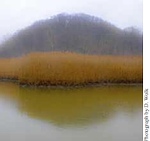Piermont Marsh Update Fall 2018
It has been over five years since the New York State Department of Environmental Conservation (DEC) first put forth its plan to eradicate phragmites, the dominant vegetation in the Piermont Marsh.
Last winter, the DEC released its first official “Draft Piermont Marsh Management Plan” dated December 2017, which differed in two significant ways from the original 2013 Permit:
1) The DEC replaced the original language referring to eradication of phragmites on “up to 200 acres” with language stating that there would be three initial “test areas” in the center of the Marsh, measuring a total of 40 acres or the approximate size of 30 football fields.
2) The DEC acknowledged that phragmites serves a useful role in reducing damage from storm surges during severe weather events.
However, the plan continued to rely on the use of glyphosate-based herbicide as its primary method of eradication.
This Draft Plan was presented at a meeting in Village Hall in February by representatives for DEC and the Palisades Interstate Parkway Commission which has partial jurisdiction over the marsh. They gave a deadline of March 1 for written comments. The Piermont Marsh Alliance received a copy under the Freedom Of Information Act and reviewed the comments. A total of 95 individuals and organizations submitted comments. 71.6% opposed the plan; 6.3% were neutral; and 22.1% supported the plan. The full text is available at the Piermont Library.
On February 20, 2018, the Piermont Village Board adopted a resolution highlighting the important role of the marsh in protecting Village life and property and the residents’ opposition to herbicide use. It pointed out that the plan did not adequately address the issue of water quality in the Sparkill Creek. The resolution also raised specific issues pertaining to notification and exploring alternatives to herbicide.
In a letter dated June 19, 2018, DEC responded to the concerns raised in the Village’s February 20 resolution. They dismissed the suggestion regarding alternative methods, stating that these would not work, and dismissed any request that the funds available for the plan be used to address water quality issues. DEC re- quested agreement from the Village before moving forward with the plan.
The Board discussed this request at a meeting in July. They decided to hold off on giving agreement until the DEC-funded study on the role of coastal marshes in protecting from storm surge and flooding is completed. They communicated this to DEC in writing, along with another reminder of the serious concerns of residents regarding glyphosate use and the recent negative news stories regarding glyphosate.
As of the present time, there has been no observed action by DEC in the marsh, neither preliminary mowing, which was due to occur “in the winter,” nor any herbicide application.
Meanwhile, the ongoing battles against all sorts of “invasive species” continue to take place all around the country. Some have begun to question the reasoning behind these extermination campaigns, suggesting that the motivation in a number of cases is influenced by factors other than good science.


